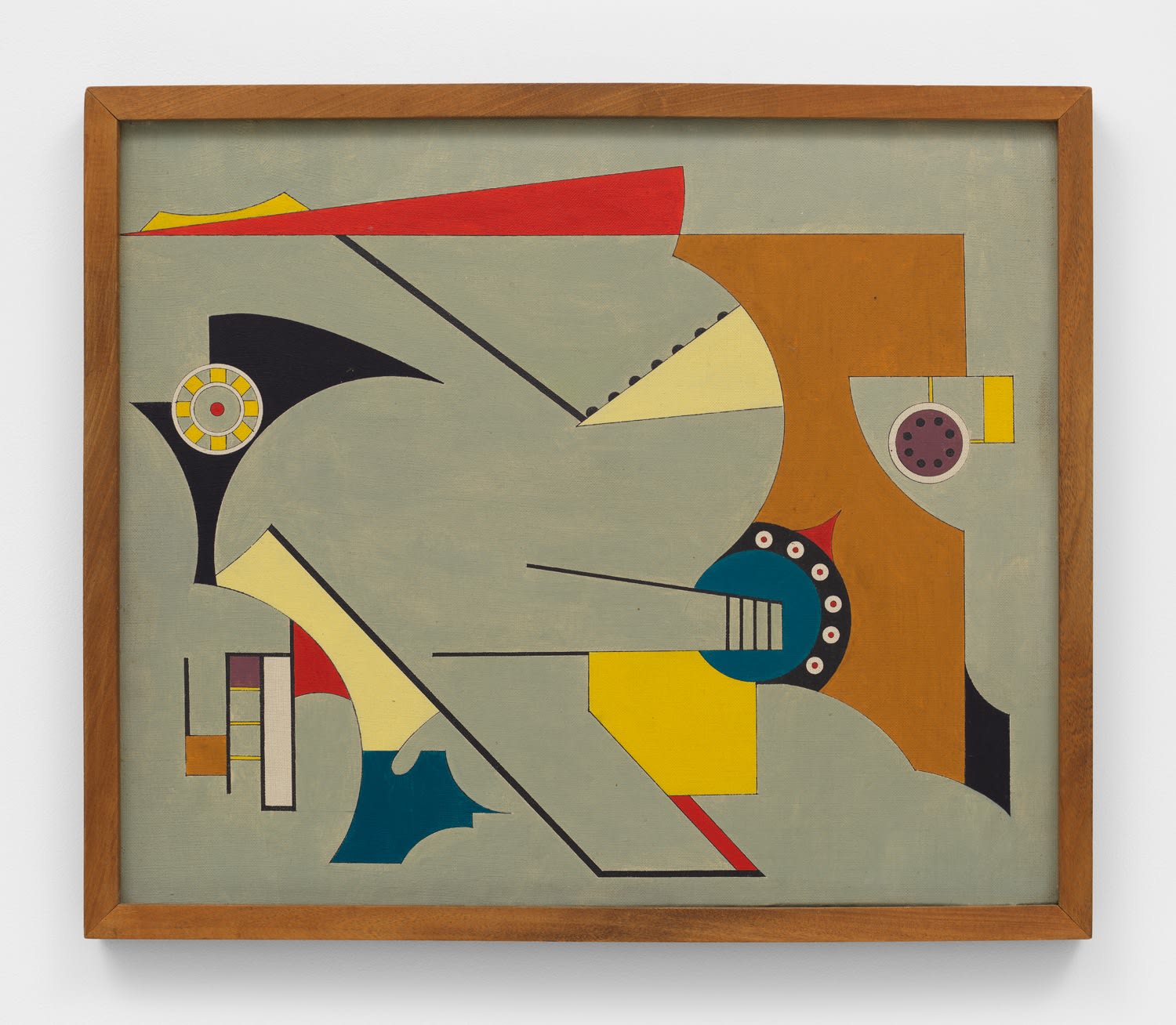







Sin título (Untitled), 1954
Oil on canvas
17 3/4 x 21 5/8 in.
45.1 x 54.9 cm
45.1 x 54.9 cm
Further images
-
(View a larger image of thumbnail 1
)

-
(View a larger image of thumbnail 2
)

-
(View a larger image of thumbnail 3
)

-
(View a larger image of thumbnail 4
)

-
(View a larger image of thumbnail 5
)

-
(View a larger image of thumbnail 6
)

-
(View a larger image of thumbnail 7
)

-
(View a larger image of thumbnail 8
)

In 1954, Gramcko attended studio art classes at the School of Plastic and Applied Arts of Caracas conducted by the Venezuelan artist Alejandro Otero, a pioneer of geometric abstraction and...
In 1954, Gramcko attended studio art classes at the School of Plastic and Applied Arts of Caracas conducted by the Venezuelan artist Alejandro Otero, a pioneer of geometric abstraction and the driving force of Los Disidentes. Gramcko developed a medium-size series of oil paintings on canvas constructed with hard lines, irregular shapes, and flat background colors. The rare paintings from this period demonstrate her efforts to reconcile expression with geometry.
“Sin título (Untitled)”, 1954, perfectly exemplifies Gramcko’s blend of surrealism and geometric abstraction to produce imagery with a unique machinic sensibility. Here, irregular red, ochre, blue, violet, black, yellow and cream shapes fit and interconnect to each other. Some resemble gears, which hint at the possibility that they can move. Gramcko’s use of curvilinear, jumbled shapes confirms her reluctance to embrace the doctrinal practice of geometric abstraction, favoring a pictorial idiom made of visual free associations.
“Sin título (Untitled)”, 1954, perfectly exemplifies Gramcko’s blend of surrealism and geometric abstraction to produce imagery with a unique machinic sensibility. Here, irregular red, ochre, blue, violet, black, yellow and cream shapes fit and interconnect to each other. Some resemble gears, which hint at the possibility that they can move. Gramcko’s use of curvilinear, jumbled shapes confirms her reluctance to embrace the doctrinal practice of geometric abstraction, favoring a pictorial idiom made of visual free associations.
Provenance
Elsa Gramcko, Caracas, VenezuelaManuel Vegas Chumaceiro, Caracas, Venezuela